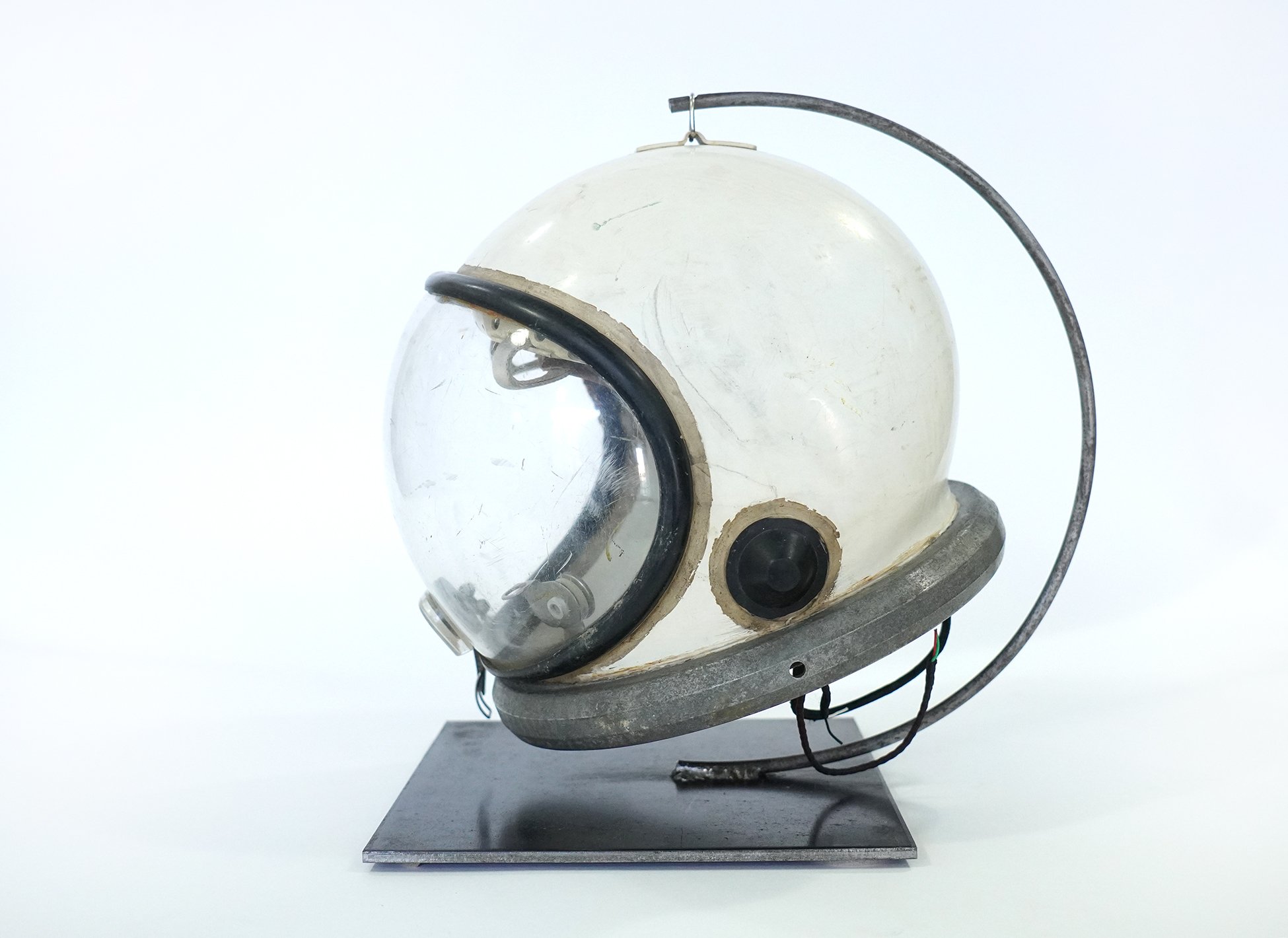1960's RFCO Fuel Handlers Helmet Minuteman and Titan II Squadron 394th
1960's RFCO Fuel Handlers Helmet Minuteman and Titan II Squadron 394th
Impossible to find RFCO Helmet from a Minuteman and Titan II Squadron and (394th) Propellant Transfer Operations Team member. This helmet is marked Serial Number S/N 0014 394th. If you watched the acclaimed documentary ‘Command and Control’ you can see that these suits are constantly worn by the team when fueling the Titan II missile. Additional photos featuring crew wearing RFCO and a helmet display are posted from the Air Force Museum along with an informative video below showing the process. Comes with custom raw steel stand as shown.
‘During the Cold War, a vast arsenal of nuclear missiles were placed in the Great Plains. Hidden in plain sight, for thirty years 1,000 missiles were kept on constant alert; hundreds remain today. The Minuteman Missile remains an iconic weapon in the American nuclear arsenal. It holds the power to destroy civilization, but is meant as a nuclear deterrent to maintain peace and prevent war.’
‘…Air Force Propellant Transfer System technicians wore suits like this in the 1960s-1980s. The vapor-proof rubber suit was fire-resistant and completely enclosed the body when worn with a helmet, gloves, and boots. The patches were repairs to keep the suit airtight.
The helmet contained a voice-operated two-way radio system with earphones and a microphone. The RFHCO also enclosed an oxygen-nitrogen breathing unit giving the wearer just under two hours' time in the suit. The suit had small ventilation ducts in the arms, legs, back, and neck to keep the wearer comfortable and to distribute oxygen.
The suit weighed about 17 lbs, and the breathing unit weighed 35 lbs. Technicians spent about a year learning how to operate the RFHCO suit and other equipment. After working with fuel or oxidizer, they showered in the suits to wash off any residual propellants, then carefully removed, cleaned, and stored their suits.’










